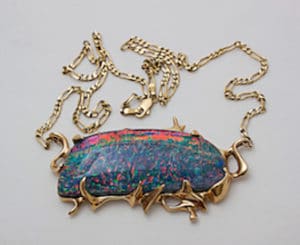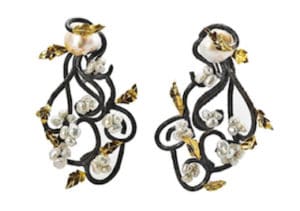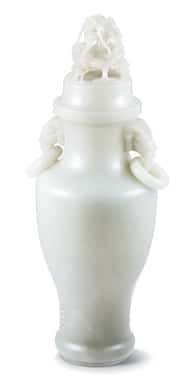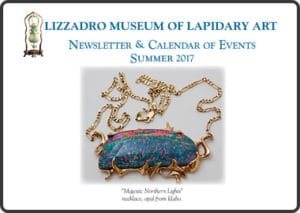Summer 2017
“Smithsonian Gems” American Designers and Phenomenal Gemstones
By Dorothy Asher
Photos and jewelry information courtesy the Smithsonian National Museum of Natural History
The Special Exhibit “Smithsonian Gems” will open on July 5 and run through March of 2018. The exhibit was put together with the help of the Smithsonian’s gemologist curator Russell Feather. This exhibit brings together twelve pieces from the National Museum of Natural History’s gem vault that highlight American jewelry designers and American gems along with a variety of phenomenal gems. Many of the pieces represent recent additions to the Smithsonian’s gem collection.
American Designers on Display
The exhibit includes some famous designers such as Harry Winston, Tiffany & Company and Baily & Company, among jeweler to the stars Kazanjian Jewelers from Beverly Hills, Brenda Smith from Atlanta, Georgia and Susan Helmich from Colorado Springs, Colorado and others. “Smithsonian Gems” blends unique gems with original designers, jewelry that will rarely be seen outside the walls of the Smithsonian. Look for special programs relating to this exhibit this Fall. Phenomenal gems in the exhibit will be featured in the Fall newsletter. Here is a preview of select pieces in the exhibit.

Midnight Dreamscape is a brooch designed and fabricated by jewelry designer Susan Helmich featuring a gem intarsia created by Nicolai Medvedev. The 18k yellow gold brooch is accented with diamonds (0.17ct total) and a 10mm South Sea pearl. The intarsia includes azurite malachite from Bisbee, AZ in the center, framed by Australian white opal, and then bordered by malachite from the Democratic Republic of the Congo. Intarsia is the term applied to both the art of stone and wood inlay, where pieces of the same thickness are precisely shaped to fit closely together without gaps or grout. The brooch was a gift of Mr. Edward R. Patton in 2015.
Susan Helmich takes her inspiration from natural elements, string instruments, historical pieces, and wants to connect to elements and the past through her pieces. She has won multiple awards in the US and Abroad including the MJSA “American Designer of the Year” 1991; Women’s Jewelry Association “Design Excellence Award” 1996. Japan International Pearl Association design competition awards 1990, 1991, 1992; Invitation to Exhibit: Munsteiner Atelier, Germany, 2002.
Nicolai Medvedev is a master of intarsia and world renowned for his intarsia boxes, objects of art, and jewelry. Several of his boxes are in the Lizzadro Collection and two are on permanent display at the Museum.

Majestic Northern Lights is a custom designed gold necklace set with an opal triplet measuring approximately 51.5 x 22.0 x 7.9mm. The opal from Spencer, Idaho represents one of the nest stones from this locality showing vivid ashes of red, yellow, green and blue play-of-color. Bob & Susan Thompson, owners of Opal Mountain Mines, Inc. in Spencer, Idaho donated the necklace to the Smithsonian in 2005.
The opal deposits in Spencer, Idaho, about 70 miles west of Yellowstone National Park, formed in a rhyolite-obsidian rock lled with gas pockets or cavities. The opal, a form of silica, was hydrothermally deposited when geyser activity brought silica rich water to the earth’s surface over 4 million years ago. As this water seeped inside the hollow cavities, the opal formed in successive layers. The thin layers of opal that formed are extremely high quality with great transparency and a vivid play-of-color. Approximately 10% of the material is thick enough for cutting a solid opal cabochon; however, most of the material is too thin and therefore is fashioned into opal doublets and triplets. Opal doublets are thin slices of precious opal glued with epoxy onto a matrix material, usually black basalt. Opal doublets are often-times covered with a thin rock crystal quartz cap to make them more resistant to scratches and breakage. This is known as an opal triplet.

Southern Charm pearl earrings were designed and donated by jewelry designer Brenda Smith in 2016. The earrings were inspired by the wrought iron gates in Charleston, South Carolina and utilize natural freshwater pearls from the Tennessee River. The earrings are hand fabricated in blackened sterling silver with 18k yellow gold hand-forged leaves plated in 22k yellow gold for contrast. The earrings feature 26.49 carat weight pearls obtained from the Latendress Family Collection, acquired between 1949-1980.
Brenda Smith likes to work with organic forms and specializes in custom pieces, working with gold, platinum, silver and all natural gemstones. She teaches jewelry design at the William Holland School of Lapidary Arts in Young Harris, Georgia and silversmithing in the Atlanta area. Her designs have been worn at the Academy Awards and chosen by celebrity stylist, Michael O’Connor. She was commissioned to design pearl jewelry for the documentary film, “Circling the Pacific” by the Cultured Pearl Association of America. Her awards include the International Pearl Design Competition by the Cultured Pearl Association of America.

Sapphire Cobblestone-style bracelet is made of blackened 18k gold and set with 288 cabochon cut blue sapphires totaling 209.3 carats. The cabochons are well-matched in color and are a mix of round, oval, and heart shapes. There are also 45 round brilliant cut diamonds set in white gold with a total weight of 0.76 ct. Each gem is set with four prongs in an open framed cell that is wire-wrap connected for exibility. The bracelet was a gift to the Smithsonian from Laurence Blickman in 2016.
Historically the nest sapphire gems came from Burma, Sri Lanka, and the Kashmir region of India. Although sapphires occur in a wide variety of colors, traditionally blue has been the most popular and valuable. Sapphire is the gem variety of the mineral corundum. Pure corundum is colorless, but small amounts of impurity atoms can impart a range of colors. In this case, iron and titanium are responsible for the beautiful blue color of the sapphire.
This exhibit was made possible through the City of Elmhurst’s Explore Elmhurst Community Grant Program. Explore Elmhurst is a marketing campaign developed to further promote community events and activities in Elmhurst to the public.
Dorothy Asher, Director of the Museum and gemologist co- curated this exhibit with Smithsonian gem curator Russell Feather. The Lizzadro Museum of Lapidary Art is a Smithsonian Affiliate.

New Acquisition
A superb celadon-white nephrite jade vase and cover from the late Qing Dynasty, early Republican Period (circa late 19th to early 20th century) was added to the Lizzadro Collection in early 2017. The baluster form vase is impressive for its large size and quality of stone. The unadorned vase portion is lustrously polished with some opaque inclusions and veins. A pair of mythical beast-head handles each suspends a loose ring. The cover nial is carved in an intricate openwork coiled dragon providing a pleasing aesthetic contrast with the plain surface. The vase sits on a wood stand and measures 14 1/8 inches in height.
The vase is a unique addition to the jade collection on permanent display. It was purchased by the Lizzadro Family Foundation at Sotheby’s in Hong Kong and was previously the property of a distinguished Asian family collection.
Large high quality jade boulders began to be sent as tribute gifts to the Qing Court during the reign of the Qianlong Emperor, after the Qing army’s conquest of the Northwest Territories in the mid- 18th century. These boulders, which came from the jade-rich territories of Khotan and Yarkand, were then selected to be carved by artisans working in the Palace Workshop, in the jade workshops of Suzhou or in those belonging to the Huai and Changlu administrations. The nished product was later presented to the court for approval before being displayed in the Palace.
During the 19th century China’s political, economic, and social conditions sank into devastation. As demand for jade remained high, the unemployed palace artisans set up workshops in Beijing. Some cities became centers of economic prosperity, such as Shanghai. As a port city under foreign control, Shanghai was exempt from Chinese law. The wealthy and nouveau riche continued to collect both traditional forms of jade and new styles. Many serious Chinese collectors who came to Shanghai focused more on ancient Chinese art and contemporary works that re ected antiquarian interests. A whole new group of archaistic style objects were created for these collectors in China’s various treaty ports.
References
Sotheby’s Hong Kong.
Later Chinese Jades Ming Dynasty to Early Twentieth Century, Michael Knight et.al., 2007.





